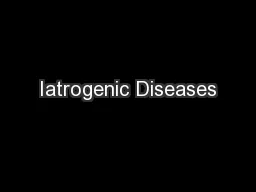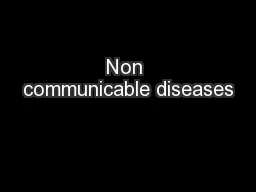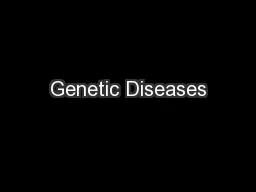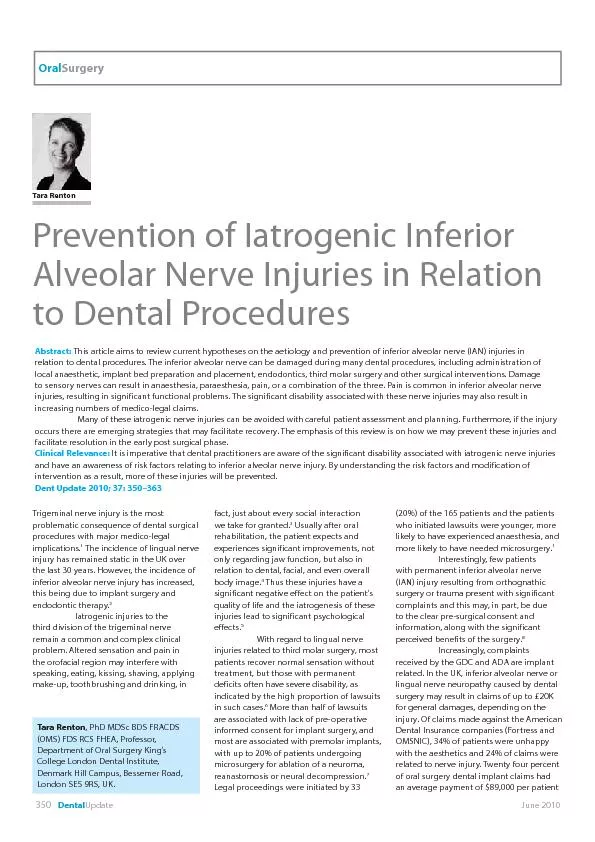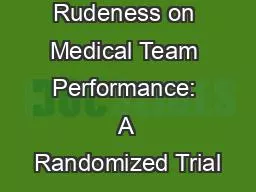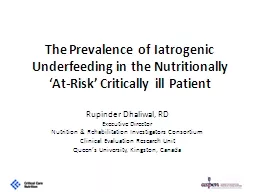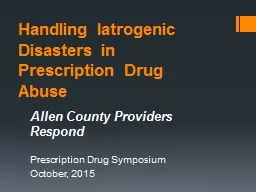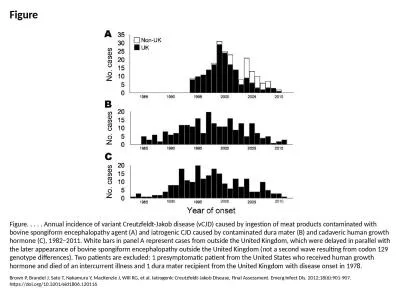PPT-Iatrogenic Diseases
Author : lois-ondreau | Published Date : 2016-05-08
Nathan Reynolds Aging Epidemiology and Services 21 May 2014 1 Introduction The adage The cure is worse than the disease has been around for the last two thousand
Presentation Embed Code
Download Presentation
Download Presentation The PPT/PDF document "Iatrogenic Diseases" is the property of its rightful owner. Permission is granted to download and print the materials on this website for personal, non-commercial use only, and to display it on your personal computer provided you do not modify the materials and that you retain all copyright notices contained in the materials. By downloading content from our website, you accept the terms of this agreement.
Iatrogenic Diseases: Transcript
Nathan Reynolds Aging Epidemiology and Services 21 May 2014 1 Introduction The adage The cure is worse than the disease has been around for the last two thousand years Quoted in some variation by. A. Bacterial Diseases of the Upper Digestive Tract (Mouth & Stomach). 1. Tooth Decay (dental caries). A) This is an endogenous infection . 1) Most common infectious disease of humans . 2) Young are more susceptible than old. Thomas Abraham . What are . non- . communicable diseases?. How big a problem are they?. Sources of information. Challenges in reporting non-communicable diseases. What are NCDs?. Diseases or conditions that are not transmissible, or caused by injury. How they are caused and why they can be beneficial. What kind of genetic disease?. Can be of two kinds:. Caused by . environmental factors. Hereditary. Genetic disease by environmental factors includes cancer due to the cells undergoing . DentalUpdate Tara Renton Prevention of Iatrogenic Inferior Alveolar Nerve Injuries in Relation to Dental ProceduresAbstract: This article aims to review current hypotheses on the aetiology and preve Pathogen. microorganism that produces . disease. A living organism of microscopic dimensions. Not all microorganisms are pathogens. The microorganism in the pictures is not a pathogen-does not produce a disease, in fact…. A. Bacterial Diseases of the Upper Digestive Tract (Mouth & Stomach). 1. Tooth Decay (dental caries). A) This is an endogenous infection . 1) Most common infectious disease of humans . 2) Young are more susceptible than old. Mrs. Stewart. Central Magnet School. Bell Work. What are the characteristics of a great presentation?. Analyze the following slides for good and bad presentation characteristics. MEDICINES THAT BACKFIRE. Program Goals. Lifetime Prevalence of Psychiatric Comorbidities in Epilepsy. Mechanisms Operant in the Development of Psychiatric Iatrogenic Symptomatology. AEDs With Psychotropic Properties. Pathogenic Mechanisms for AED-Induced Depression. Yeditepe University. Department of Thoracic Surgery. Lesson: Surgical Pathologies of Trachea and Their Treatment. At the end of this lecture, the student should be able to:. List. . the. . presenting. Arieh Riskin, MD, MHA, Amir Erez, PhD, Trevor A. Foulk, BBA, Amir Kugelman, MD, Ayala Gover, MD, Irit Shoris, RN, BA, Kinneret S. Riskine and, Peter A. Bamberger, PhD. PEDIATRICS Volume 136, number 3, September 2015. HAS 222. Presentation Plan. Definition of occupational diseases. Epidemiological data on occupational diseases. Exposure routes for occupational diseases. Classification. of . occupational. . diseases. Rupinder Dhaliwal, RD. Executive Director . Nutrition . & Rehabilitation Investigators Consortium. Clinical Evaluation Research Unit. Queen’s University, Kingston, Canada. Introduction. Critically ill patients receive only 50% prescribed energy and . Allen County Providers Respond. Prescription Drug Symposium. October, 2015. The Crisis. Deborah A. McMahan, MD. Agenda. Issue. Solutions. Why Worry?. Provider Perspective. Issue. http://www.dmu.edu/wp-content/uploads/2014/11/american-opioid-usage-375x468.png. Brown P, Brandel J, Sato T, Nakamura Y, MacKenzie J, Will RG, et al. Iatrogenic Creutzfeldt-Jakob Disease, Final Assessment. Emerg Infect Dis. 2012;18(6):901-907. https://doi.org/10.3201/eid1806.120116.
Download Document
Here is the link to download the presentation.
"Iatrogenic Diseases"The content belongs to its owner. You may download and print it for personal use, without modification, and keep all copyright notices. By downloading, you agree to these terms.
Related Documents

